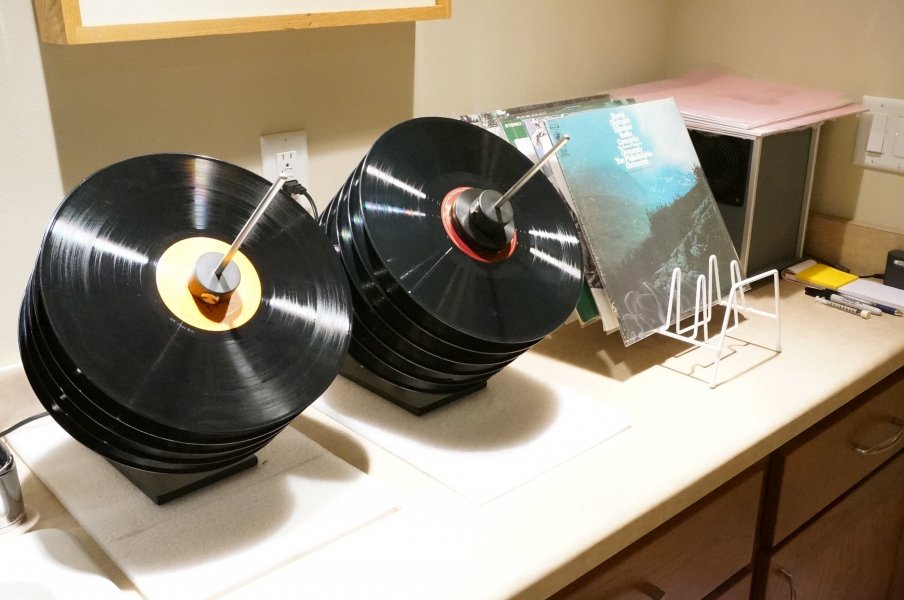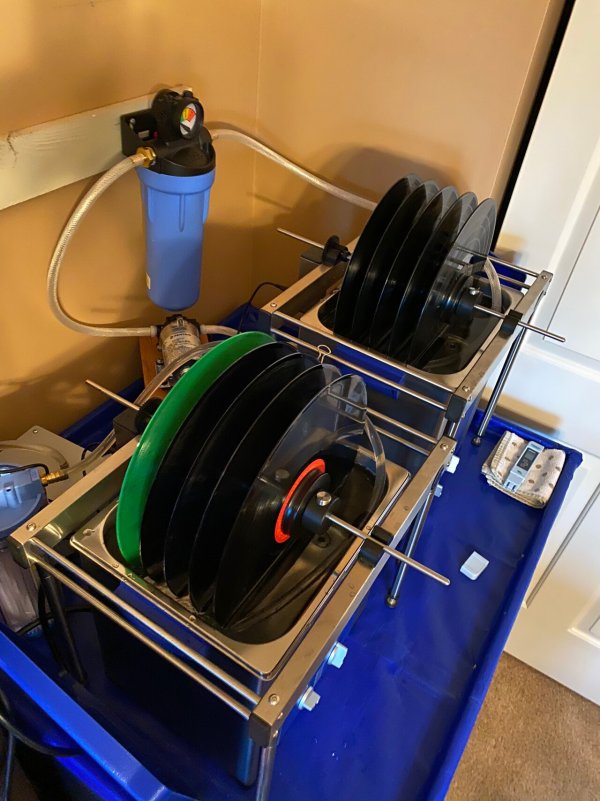btw; point me to your post where you talk about adding a second (love the picture) wash tank.

i'd like to read about it without having to find it.
Back to your question...
The discussion about adding a rinse tank largely took place in an almost daily back-and-forth that Neil and I had from May - August shortly after the first (5-20-2020) publication of his paper
Precision Aqueous Cleaning of Vinyl Records on Bill Hart's site
The Vinyl Press. If you go to that first link then scroll past Hart's introduction down to the Comments section you can see the beginning of my discussion with Neil - it is long, dense, covers a multitude of topics and it has a certain thesis-antithesis-synthesis character as we work our way through topics to considerations that along with further discussions here eventually led to the construction of the system that David and I use. Feel free to dive in - but given that, I will try for a synopsis here.
One of the ideas behind my original system was to avoid the need for a rinse step by keeping the wash tank water scrupulously clean by using filtration while running the wash. My goal, again, was clean records via an automated process with reasonable throughput. I was pretty satisfied with the results of doing things that way, however Neil convinced me that records would be cleaner when rinsed. One methodology that Neil focused on initially was largely manual, one record at a time, with record rinse done using a spray bottle. I was not going to adopt a manual approach because it could easily triple the amount of time needed to clean a record.
The 'problem' is what is referred to as NVR - non-volatile residue that remains in the tank water and on the removed record. Here is Neil, from that conversation: "
For the purpose of a record, NVR is any residue that is either on the record or will remain on the record after all solutions have dried/evaporated. NVR can be insoluble particulate that can be removed by filtration or it can be soluble matter that cannot be removed with normal filtration."
... "Solubilized matter can be solubilized salts that contribute to TDS, [total dissolved solids]
or they may be nonionic surfactant, or soluble contaminates in the IPA [iso-propyl alcohol]
that do not contribute to TDS. Either way, solubilized NVR is not removed by the particulate/sediment filter..." I left out a ton of v technical information that you can find in our on-line conversation.
I started thinking about how to do an automated rinse and came to the (now obvious) approach of adding a second ultrasonic tank - clean water with agitation.
The key for me was to be able easily to move a spindle full of 5-6 records from wash tank to rinse tank without touching the records. That meant using another Kuzma RD. The ultrasonic rinse tank did not need the bells and whistles that the Elma P-120H offered so I chose the Elma S-120H machine.
Neil said using a second ultrasonic tank for rinsing would yield ">90%" reduction in NVR. So, there it is.
The other major changes were replacing my current wash tank filter with an 0.2 micron absolute filter and putting a differential pressure gauge on the filter's cannister to monitor its filling up with captured particulate. I moved my wash tank's previous filter to the rinse tank. And switched to using Tergitol 15-S-9 as the sole 'soap' in the wash tank.
There may be other ways to produce records as clean as this system does. David (
@dminches), if I may speak for him, and I are very very satisfied with the results we get. Elsewhere, Neil has called it state-of-the-art. I have learned a lot from Neil during this adventure - the improvements we made would not be possible without his contributions. Thank you Neil.
Fwiw, aside from the design itself the 'hard part' of this as a DIY effort is gathering all the parts together. Assembly is simple. Space is needed for the two tanks and a reccomendation is to put them in a tray to handle any water drops. Temporary space is needed for drying - the spindles and drying stands come with the RD.

Records on their spindles, drying.
Note the Audio Desk machine forlorn in the back corner.








